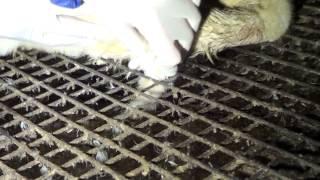In preparing for the international Human-Animal
Studies conference Minding Animals
Two, which is taking place in Utrecht, The Netherlands,
starting on July 6th, I have been thinking about animal rights and whether it
might be morally and/or legally permissible to trespass to learn about how
animals live and die on private property.
Animal advocates have a long history of trespass.
Often referred to as 'open rescue', animal advocates often
illegally enter intensive agricultural units (factory farms), film inside, and
then distribute the footage.
While this is common practice among animal
advocates, it is not a topic academics have turned their attention to.
•
Is trespass necessary to protect the interests of
animals?
•
How might we learn about the way animals live and die
without trespass?
•
Under what conditions might trespass be
permissible?
•
How might we protect modern property rights generally,
while tolerating trespass where animals live on private property?
These and other questions have been on my mind in
preparing my conference paper for Minding Animals.
My thinking has been aided by this week's media
around the intensive rearing of ducks for meat.
On June 19th, the Australian
Broadcasting Corporation (ABC)'s 7.30 Report aired a story they
titled 'Disturbing footage prompts calls for duck farming
changes'.
The story featured two types of footage about intensive duck farming:
footage shot 'covertly' by Animal Liberation NSW, and footage shot by the ABC,
taken with the farm owner's consent.
Below is a still from the Animal Liberation covert footage. It shows a
duck with his/her wing caught in wire mesh.
What was fascinating about the 7.30 Report story is that both sets
of footage would appear to be critical to understanding the intensive duck
meat story. On the one hand some birds have access to sunlight and some freedom
of movement. On the other hand, some birds live in very cramped conditions and
among unsuitable material, such as wire mesh.
If it is true that both sets of footage tell us something important about
how ducks are raised for meat in Australia, how would we be able to learn about
intensive duck production without trespass?
My colleagues and I are still working on the paper. I look forward to
feedback from others at the conference and I will report back on how it goes.


No comments:
Post a Comment